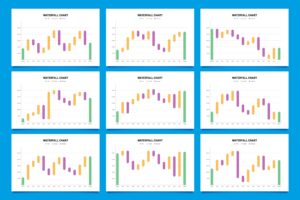Did you know that recognizing a triangle chart pattern in the market can give you a huge advantage in timing your trades? Many traders overlook these simple formations, missing opportunities that could have boosted their profits. If you understand how to read and act on triangle patterns, you can achieve powerful results for your best trades — consistently and confidently.
How to Understand a Triangle Chart Pattern
A triangle chart pattern is a technical chart formation that signals consolidation and potential breakout points. It forms when price movements create converging trendlines, creating a triangle shape. These patterns help you anticipate market behavior and make more informed entry and exit decisions.
Why it matters:
- Helps predict the next price movement.
- Makes your trades more precise and disciplined.
- Reduces guesswork and emotional trading.
Example:
Imagine a stock moving between two converging lines for several days. Once the price breaks out of the triangle, you can position your trade accordingly. This simple visual cue can prevent missed opportunities.
Also Read: Trading for Beginners
Different Types of Triangle Chart Patterns Explained
There are three main types of triangle patterns. Knowing them helps you adapt your strategy to each scenario.
Ascending Triangle Chart Pattern
Descending Triangle Chart Pattern
- Features a horizontal bottom line and descending top line.
- Indicates bearish momentum — sellers gradually gain control.
- Entry tip: A break below the bottom line can signal a short-selling opportunity.
Symmetrical Triangle Chart Pattern
- Both top and bottom lines converge at a similar angle.
- Suggests indecision — the market could break either way.
- Entry tip: Wait for a confirmed breakout in either direction.
Also Read: ETFs
Spotting a Triangle Chart Pattern in Real-Time
Identifying a triangle chart pattern isn’t complicated, but it requires attention and practice.
Look for Converging Trendlines
- Draw lines along the highs and lows.
- If the lines meet, you likely have a triangle pattern.
Volume Analysis
Time Frame Matters
- Patterns on longer timeframes (daily or weekly charts) are more reliable.
- Short-term patterns can offer quick trades but may be less predictable.
Pro Tip: Combine triangle patterns with other indicators like RSI or moving averages for higher accuracy.
Also Read: Sector Rotation
Practical Trading Strategies Using Triangle Chart Pattern
Triangle patterns are powerful, but you need a strategy to capitalize on them.
Breakout Strategy
False Break Prevention
Partial Entries and Scaling
- Enter partially on initial breakout and add to your position as trend confirms.
- Helps manage risk while maximizing profits.
Also Read: Colour Trading Mastery
Psychological Factors When Trading Triangle Pattern
Fear vs. Greed
Patience
- Wait for confirmation of the breakout.
- Impulsive trades can destroy potential gains.
Confidence
Tip: Maintain a trading journal noting patterns, entry, exit, and emotions to improve discipline.
Also Read: Trading Account Setup
Common Mistakes with Triangle Chart Pattern
Even experienced traders make these errors:
- Entering too early before confirmation.
- Ignoring volume trends.
- Setting stop-loss too tight, resulting in premature exits.
- Over-relying on a single indicator without cross-verification.
Avoiding these mistakes will make your triangle chart pattern trading smoother and more profitable.
Also Read: Commodity Trading
Advanced Triangle Chart Pattern Techniques
Combining Patterns with Indicators
- Use RSI, MACD, or Bollinger Bands to strengthen your signals.
- Multiple confirmations increase the likelihood of success.
Multi-Timeframe Analysis
- Check both short-term and long-term charts for alignment.
- Conflicting signals across timeframes may indicate caution.
Trade Management and Scaling
- Split your trades to reduce risk: partial entry, partial exit.
- Adjust stops dynamically as the price moves in your favor.
Also Read: Futures Trading Success
Leveraging a Triangle Chart Pattern for Risk Management
Using the Triangle Chart Pattern’s Width for Stops
- Measure the widest part of the triangle. This distance can guide how far you place your stop-loss from the breakout point.
- A wider triangle usually requires a slightly larger stop-loss to avoid being stopped out prematurely.
Adjusting Position Size
- If your stop-loss is wider, reduce your trade size proportionally.
- This ensures your potential loss stays within your risk tolerance while still allowing you to participate in the breakout.
Also Read: Hedging
Triangle Chart Pattern as Alerts for Market Volatility
- A compressing triangle often signals that volatility is decreasing.
- When a breakout finally happens, volatility spikes — giving you a clear opportunity for high-probability trades.
- You can also use this insight to avoid entering positions too early in choppy markets.
Combining Risk Analysis with Rewards
- Calculate a risk-to-reward ratio before entering a trade based on the triangle’s height.
- Target a reward at least 2–3 times your defined risk to maximize profitability.
Pro Tip: Treat the triangle as both a profit and risk guide. This dual approach helps protect your capital while keeping your trades strategic and calculated.
Also Read: How to Use TradingView
FAQs About Triangle Chart Pattern
How do I confirm a breakout?
Look for price movement beyond the trendline with strong volume.
Can triangle patterns fail?
Yes, false breakouts occur. Use volume and other indicators to confirm.
Which timeframe is best?
How do I manage risk with a triangle pattern?
Set stop-loss outside the triangle and use partial entries to minimize exposure.
Also Read: Overtrading Trap
Takeaway: Unlocking Powerful Results with Triangle Chart Pattern
Mastering triangle chart patterns is like learning a secret rhythm of the market. Patience, discipline, and practice are key. When you spot these patterns and trade with a clear strategy, you can unlock powerful results for your best trades.
Remember, trading isn’t about guessing or rushing; it’s about observing, planning, and executing smartly. Every triangle pattern offers insight — keep analyzing, journaling, and refining your approach. Over time, these small but disciplined steps compound into meaningful trading success.
Also Read: How to Shield Your Trading Account







